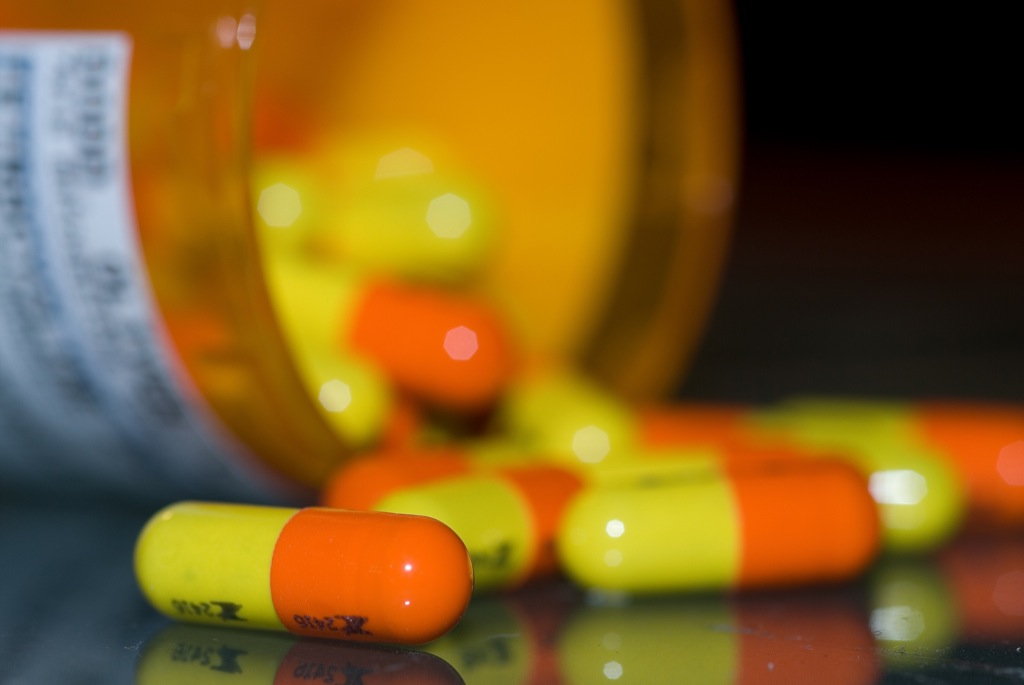 Microbiology
Microbiology
Collateral damage: antibiotics disrupt the balance in the gut

Bacteria are present everywhere, also on our body surfaces. The intestine provides optimal living conditions to a diverse microbial ecosystem, termed the gut microbiota. In the intestine, the microbes live in very close connection and constant interaction with the host, us. The connection between bacteria and humans has a long evolutionary history and the microbes and their activities have become an integral part of how our bodies work. Microbial products act directly on the cells in the intestine, for example by providing energy to the cells lining the intestine and by stimulating the intestinal immune system. Many microbial products enter the bloodstream and influence different organ systems and tissues. It is becoming increasingly recognised that these microbes are part of us, and have a role in the maintenance of human health.
As we begin to understand that microbes living in our intestines can affect how our bodies work, it is becoming evident that disturbing the natural balance in their microbial community may have negative consequences on us. Antibiotics taken orally kill not only the pathogens that they are supposed to target, but also innocent bystanders in the intestine. Antibiotic use is known to change the composition of the gut bacterial community, killing susceptible organisms, and thus allowing resistant ones to bloom. Bacterial species differ in their ability to tolerate change, and often it is the potentially pathogenic species that have the ability to opportunistically repopulate a new ecological space when it becomes available; for example when antibiotics have reduced the number of normally dominant species. Antibiotics are among the most common prescription drugs given to children. It has been assumed that gut microbiota recovers within weeks or a few months after an antibiotic treatment. However, studies which used mice as model organism, suggest that early-life antibiotic treatments could have long-term effects on the host, showing in particular that antibiotic treatments in early life alter the microbiota in a way which predisposes the host to be overweight. Indeed, many studies in human children have shown that antibiotic use in early life is associated with increased weight (measured by the BMI) later in childhood. These observations led to the question of how the microbiota change in healthy children after antibiotic treatments.
To answer this question, we analysed the fecal bacterial composition in a group of 142 healthy daycare-attending 2-7 year olds in Finland. The bacterial composition was analysed using DNA-sequencing: we extracted DNA from the frozen fecal samples, and read the DNA sequence of a gene region that differs between bacterial species. The DNA sequences allowed us to identify which bacteria were in the fecal samples and how abundant they were. We collected antibiotic purchase information for the children from the national drug purchase registry, which allowed us link the composition of the microbiota to the children's antibiotic use history.
We found that antibiotic use was the main factor affecting the children's microbiota composition. Specifically, the time since the child had their last macrolide-antibiotic treatment was strongly associated with the composition and diversity of the microbiota: macrolide treatments appeared to cause a decline in gut bacterial diversity, and particularly a dramatic reduction in the abundance of one gorup, the bifidobacteria. Bifidobacteria are generally considered beneficial to the health of children and they may even protect against obesity. In general, the microbial changes that we observed after a macrolide treatment have all been previously associated with obesity or related disorders. The full recovery of the children's gut microbiota was estimated to take up to two years after their last macrolide treatment. The associations between gut microbial diversity and the other common antibiotic types, penicillin or amoxicillin, were somewhat weaker and the recovery of the bacterial diversity slightly faster. All of these antibiotic types are often prescribed to treat the same infections, so the differences were not caused by different types of infections. These results suggest that antibiotics, and macrolides in particular, cause potentially obesity-promoting changes in children's gut microbiota, which could explain why the use of these antibiotics in childhood is associated with an increased risk of being overweight.
Original Article:
Korpela K, Salonen A, Virta L et al. Intestinal microbiome is related to lifetime antibiotic use in Finnish pre-school children. Nature Communications. 2016;7:10410. doi:10.1038/ncomms10410.Next read: Killing C. difficile with targeted strikes by Joseph Kirk
Edited by:
Dr. Carlos Javier Rivera-Rivera , Managing Editor
We thought you might like
Fighting back antibiotic resistance: a new hope from the soil
Feb 24, 2016 in Microbiology | 4 min read by Dan KramerInvisible allies for healthy juvenile growth
Oct 12, 2016 in Microbiology | 4 min read by Martin SchwarzerRed in Tooth and Claw: another weapon against antibiotic resistance
Oct 3, 2017 in Microbiology | 3.5 min read by Nicholas A. IsleyVaccine hope against a sexually transmitted disease: the answer to the burgeoning rise in a superbug
Jul 3, 2018 in Health & Physiology | 3.5 min read by Helen Petousis-HarrisMore from Microbiology
Monoclonal antibodies that are effective against all COVID-19 -related viruses
Jan 31, 2024 in Microbiology | 3.5 min read by Wan Ni ChiaPlagued for millennia: The complex transmission and ecology of prehistoric Yersinia pestis
Jul 31, 2023 in Microbiology | 3 min read by Aida Andrades Valtueña , Gunnar U. Neumann , Alexander HerbigHow cellular transport can be explained with a flip book
Jun 5, 2023 in Microbiology | 3 min read by Christina ElsnerThe Achilles’ heel of superbugs that survive salty dry conditions
Apr 24, 2023 in Microbiology | 4 min read by Heng Keat TamNew chemistry in unusual bacteria displays drug-like activity
Mar 21, 2023 in Microbiology | 3.5 min read by Grace Dekoker , Joshua BlodgettEditor's picks
Trending now
Popular topics


